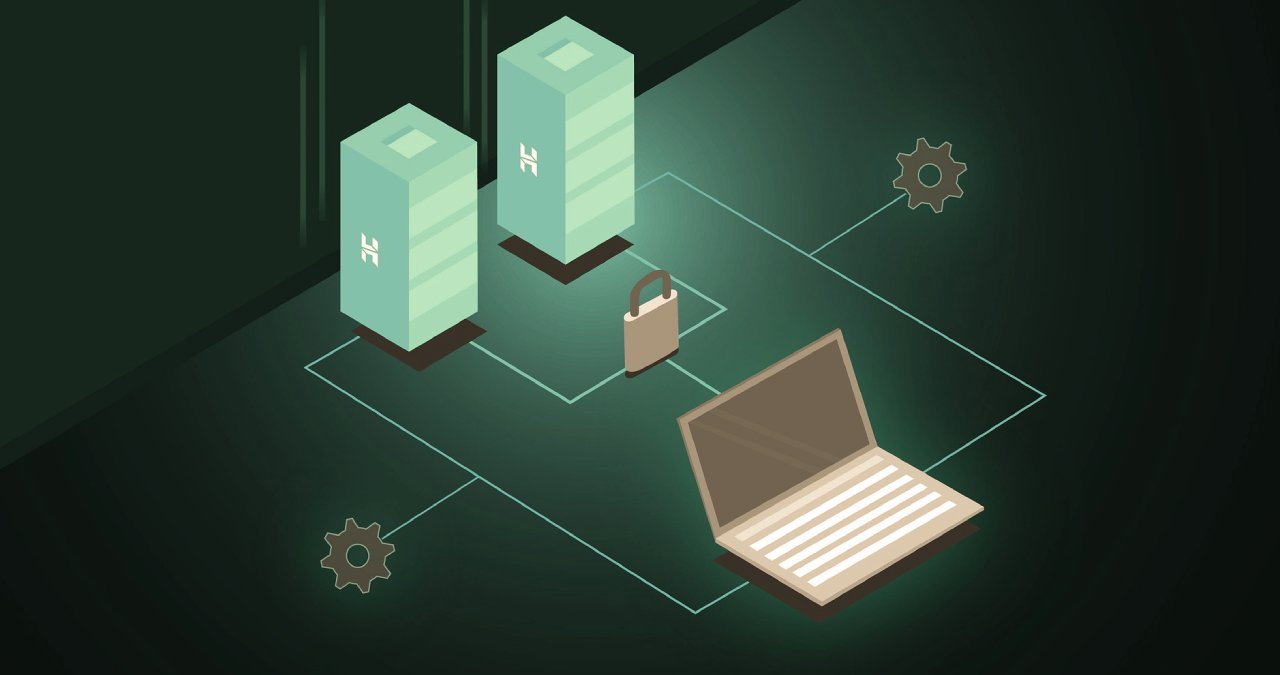The client-server model is an architectural concept for the distribution of services and tasks in a network. Services are provided by servers and can be used by clients. Typical applications of the client-server model in IP networks are accessing websites via HTTP, loading files via FTP, or handling e-mail traffic via SNMP.
The client-server model is one of the most widely used concepts for distributing tasks and services in a network. One or more clients access the services provided by servers. In TCP / IP networks, many applications are operated based on the client-server model.
Typical applications are the handling of e-mail traffic, access to the Internet pages of a web server, the transfer of files, or the resolution of domain names in the Domain Name System (DNS). Protocols such as FTP (File Transfer Protocol), HTTP (Hypertext Transfer Protocol) or SNMP (Simple Network Management Protocol) regulate the flow of communication and the exchange of information between the client and the server.
In addition to the client-server model, there are other architecture concepts such as the peer-to-peer model or the master-slave model. If the service of a server is to be used, the initiative for requesting the service always comes from the client. The server is on standby and answers the clients’ requests.
Often several server programs are installed and active at the same time on a hardware system. That is why the computers themselves are often referred to as servers. Computers such as desktop computers, which mainly perform client functions, are also called clients. According to the client-server model, the terms server and client are not to be used for physical hardware systems, but rather refer to the logical function of a program. Both client and server programs can be implemented on a computer.
Table of Contents
Typical Features Of The Client-Server Model
- Distribution of different tasks on client and server
- Servers provide services
- Clients request services from servers
- Regulation of communication and information exchange between Client and server via protocols
- Servers serve one or more clients
- Server and client functions or tasks are not tied to any physical hardware
- Physical computers can perform both client and server tasks
- The initiative for interaction always comes from the client
Definition Of Server And Client
For a better understanding of the client-server model, more detailed definitions of client and server are given below. It is important to understand that the terms client and server do not describe hardware, but roles.
The task of the server role is to provide a specific service locally or via the network. The server receives requests from clients regarding this service, processes them, and sends the response back to the clients. One server can serve many different clients.
The client requests a specific service from the server responsible for it. The initiative for communication always comes from the client. It formulates the request, sends it to the server locally or via the network, and interprets the response received. A client can communicate with different servers if necessary. Client programs often interact with users via user interfaces.
Typical Client/Server Applications And Protocols
Many IT applications are based on the client-server model. Clients use certain applications or data that are made available by an application server or database server.
Numerous applications and protocols in TCP / IP networks such as the Internet use the client-server model. One of the most popular uses is surfing the World Wide Web (WWW). Clients (web browsers) request the content of certain Internet pages from a web server. Communication takes place via HTTP or HTTPS. The web browser sends the HTTP or HTTPS requests to a web server that can be reached in the network via its IP address. The web server receives the requests, processes them, and delivers the desired website with its content. The HTTP or HTTPS responses are processed in the web browser and presented to the user as graphic content.
Another typical client/server applications and protocols in the TCP / IP environment are file transfer via FTP, processing of e-mail traffic via SMTP, POP3, or IMAP, the printing of documents via print servers, resolution of domain names in DNS, querying directory services via LDAP (Lightweight Directory Access Protocol), displaying messages via NNTP (Network News Transfer Protocol), querying the time of a time server via NTP (Network Time Protocol), implementing VPNs via a VPN -Server and many more.
Alternative Architecture Models
In addition to the client-server model, there are other architecture models for distributing tasks and providing services in IT environments, such as the peer-to-peer model or the master-slave model. Compared to the client-server model, a peer program in the peer-to-peer model fulfills server and client tasks at the same time. The peers are fundamentally equal to each other. In the master-slave model, a master takes on the leading role for all slaves. The master grants the slaves the right to access common resources. The initiative for a request cannot come from the slave. He has to wait until he receives permission to communicate from the master.
Advantages And Disadvantages Of The Client-Server Model
Advantages Of The Client-Server Model Are:
- Central administration of services and resources as well as central data storage
- Secure central management of access rights
- One server can serve many clients
- Servers can be provided via the network regardless of location
Disadvantages Of The Client-Server Model Are:
- The failure of a server causes a general service failure – redundancies must be provided for critical services
- Servers must have enough bandwidth and resources to serve all clients
- Server resource bottlenecks slow down responses for all clients
- The operation and provision of a server is associated with the increased expenditure of time and money and requires specific know-how
Also Read: How To Choose The Right 3D Printer
